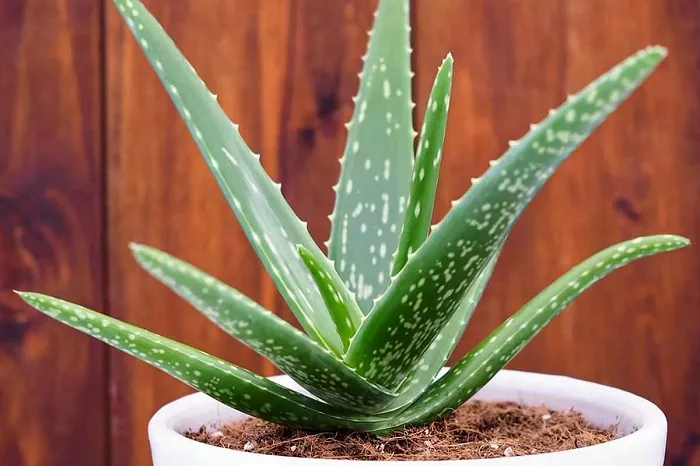Aloe plants are easy to grow and propagate, making them perfect for both new and experienced gardeners. These hardy succulents thrive with minimal care and can be multiplied in several ways. Whether you want to expand your collection or share plants with friends, learning how to propagate aloe is simple. This guide covers the best methods, from offsets to leaf cuttings, and provides step-by-step instructions. By the end, you’ll know exactly how to grow new aloe plants successfully.
Understanding Aloe Propagation Basics
Before diving into propagation, it’s important to know how aloe plants naturally reproduce. Most aloes produce “pups” or offsets—small clones that grow at the base of the mother plant. These are the easiest way to propagate. Other methods, like leaf cuttings or seeds, take more time but can also work.
Why Propagate Aloe?
- Expand your collection without buying new plants.
- Revitalize an overgrown plant by removing crowded pups.
- Share with friends as a sustainable gardening practice.
Method 1: Propagating Aloe from Offsets (Pups)
This is the most reliable way to grow new aloe plants. Pups are baby plants that sprout near the mother plant’s roots.
Step-by-Step Guide:
- Identify Healthy Pups
- Look for offsets that are at least 3-4 inches tall.
- They should have a few leaves and their own root system.
- Remove the Pup Carefully
- Gently dig around the base of the mother plant.
- Use a clean knife or scissors to separate the pup, keeping some roots intact.
- Let the Cut Dry
- Place the pup in a shaded area for 1-2 days.
- This prevents rot when planted.
- Plant in Well-Draining Soil
- Use a cactus or succulent mix.
- Water lightly and keep in bright, indirect light.
- Care for the New Plant
- Avoid overwatering—wait until the soil is dry.
- After a few weeks, roots will strengthen, and growth will begin.
Method 2: Growing Aloe from Leaf Cuttings
While less common, leaf cuttings can work if done correctly.
Steps to Follow:
- Choose a Healthy Leaf
- Pick a thick, mature leaf from the outer part of the plant.
- Cut and Dry the Leaf
- Use a sharp, clean knife to make a clean cut.
- Let it dry for a few days until the cut end forms a callus.
- Plant the Leaf
- Dip the cut end in rooting hormone (optional).
- Place it in dry succulent soil and wait for roots to develop.
- Water Sparingly
- Mist lightly every few days.
- Too much water will cause rot.
Note: This method has a lower success rate than using pups, so patience is key.
Method 3: Starting Aloe from Seeds
Growing aloe from seeds takes the longest but can be rewarding.
How to Do It:
- Get Fresh Seeds
- Buy from a trusted supplier or harvest from a mature aloe plant.
- Prepare the Soil
- Use a well-draining mix in a shallow tray.
- Sow the Seeds
- Scatter seeds lightly and cover with a thin layer of soil.
- Provide Warmth and Light
- Keep the soil slightly moist and place in a warm spot.
- Germination can take 2-4 weeks.
- Transplant Seedlings
- Once they grow a few inches, move them to individual pots.
Advanced Offset Propagation Techniques
While basic pup removal is straightforward, these professional methods increase success rates to nearly 100%:
Optimal Timing for Separation
Best performed in early spring (March-April in Northern Hemisphere)
- Ideal when pups have:
- 4-5 developed leaves
- 1/3 the size of mother plant
- Visible root initials (small white bumps at base)
Surgical-Grade Separation Method
- Sterilize tools with 70% isopropyl alcohol
- Water mother plant 24 hours prior to reduce stress
- Use a curved grafting knife for precise cuts
- Make an angled incision 1-2mm into the mother’s stem
- Preserve the pup’s basal plate (where roots emerge)
Root Stimulation Protocol
After separation:
- Dip in rooting hormone (I recommend Clonex Gel)
- Place on dry perlite for 48 hours
- Mist with seaweed extract solution (1/4 strength)
- Plant in 70% pumice/30% coco coir mix
- Pro Tip: Rotate separated pups 90° daily to encourage even root development.
Common Mistakes to Avoid
- Overwatering: Aloe hates soggy soil—water only when dry.
- Using Poor Soil: Always use a fast-draining mix.
- Direct Sun Too Soon: New plants need indirect light at first.
Final Tips for Success
- Best Time to Propagate: Spring or early summer.
- Tools Needed: Clean knife, well-draining pots, succulent soil.
- Patience is Key: Some methods take weeks or months.
- Conclusion: Enjoy Your Thriving Aloe Collection!
Conclusion
Propagating aloe is a fun and rewarding way to grow more of these useful and beautiful plants. Whether you choose offsets, leaf cuttings, or seeds, each method has its own charm. The easiest and most reliable way is through pups, while leaf cuttings and seeds offer a fun challenge for patient gardeners.
Remember, the key to success is proper care—well-draining soil, controlled watering, and the right amount of light. Soon, you’ll have a collection of healthy aloe plants ready to use for skincare, home decor, or gifting to fellow plant lovers.
Now that you know how to propagate aloe, why not give it a try? With a little effort, you’ll have new plants thriving in no time. Happy gardening!


